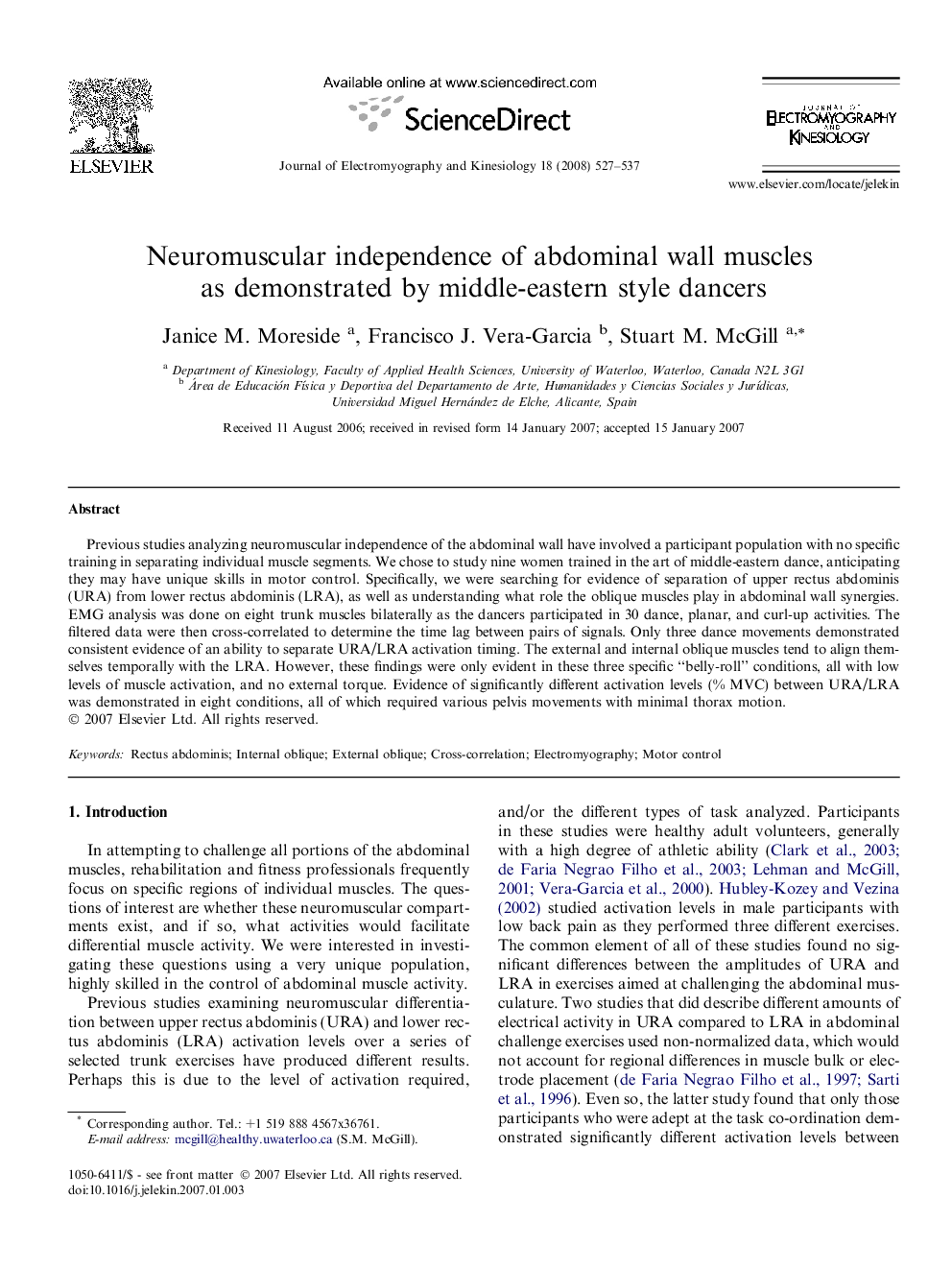| کد مقاله | کد نشریه | سال انتشار | مقاله انگلیسی | نسخه تمام متن |
|---|---|---|---|---|
| 4065621 | 1266261 | 2008 | 11 صفحه PDF | دانلود رایگان |

Previous studies analyzing neuromuscular independence of the abdominal wall have involved a participant population with no specific training in separating individual muscle segments. We chose to study nine women trained in the art of middle-eastern dance, anticipating they may have unique skills in motor control. Specifically, we were searching for evidence of separation of upper rectus abdominis (URA) from lower rectus abdominis (LRA), as well as understanding what role the oblique muscles play in abdominal wall synergies. EMG analysis was done on eight trunk muscles bilaterally as the dancers participated in 30 dance, planar, and curl-up activities. The filtered data were then cross-correlated to determine the time lag between pairs of signals. Only three dance movements demonstrated consistent evidence of an ability to separate URA/LRA activation timing. The external and internal oblique muscles tend to align themselves temporally with the LRA. However, these findings were only evident in these three specific “belly-roll” conditions, all with low levels of muscle activation, and no external torque. Evidence of significantly different activation levels (% MVC) between URA/LRA was demonstrated in eight conditions, all of which required various pelvis movements with minimal thorax motion.
Journal: Journal of Electromyography and Kinesiology - Volume 18, Issue 4, August 2008, Pages 527–537